#daughter of william v landgrave of hesse-kassel
Explore tagged Tumblr posts
Photo
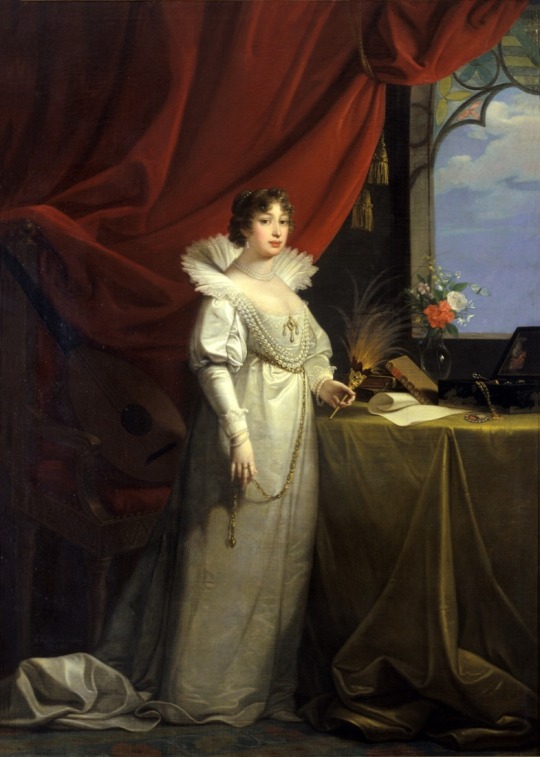
Karoline Amalie of Hesse-Kassel (11 July 1771, in Hanau – 22 February 1848, in Gotha), was a German princess and member of the House of Hesse-Kassel by birth, and Duchess of Saxe-Gotha-Altenburg by marriage.
She was the second daughter of Landgrave (later Prince) William I of Hesse by Princess Wilhelmina Caroline of Denmark and Norway, daughter of King Frederick V.
#Karoline Amalie of Hesse-Kassel#House Hesse-Kassel#XVIII century#XIX century#people#portrait#paintings#art#arte
12 notes
·
View notes
Text


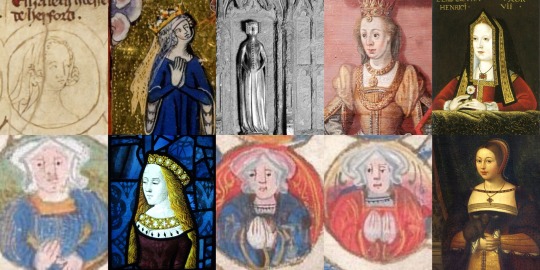
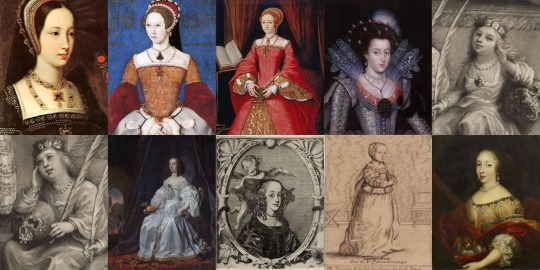
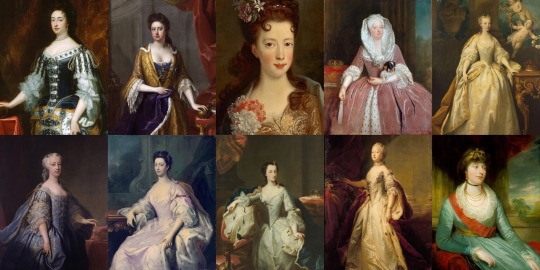
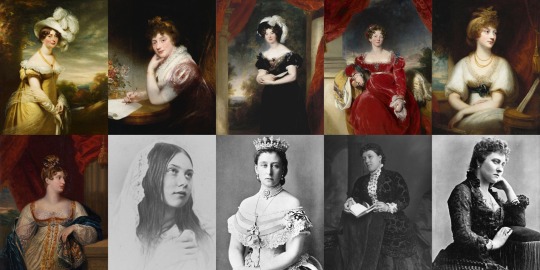

Every English Princess Ever
You’ve heard of Every Queen of England Ever, now I present to you another product that proves I have way too much time on my hands! If you notice any mistakes, please point them out to me kindly. I am sorry I do not know everything, but there is no reason to be rude. 😁
Æthelswith - Daughter of Æthelwulf and his first wife Osburh. She married King Burgred of Mercia in 853, making her the Queen of Mercia.
Æthelflæd - Daughter of Alfred the Great and Ealhswith. When her husband Æthelred, Lord of Mercians died in 911, she became Lady of the Mercians, and reigned for seven years.
Æthelgifu - Daughter of Alfred the Great and Ealhswith. When Alfred founded Shaftesbury Abbey in 890, he made her its first abbess.
Ælfthryth - Daughter of Alfred the Great and Ealhswith. Her marriage to Baldwin II, Count of Flanders made her Countess of Flanders.
Eadgifu - Daughter of Edward the Elder and his second wife Ælfflæd. She was Queen of West Francia by her marriage to Charles III.
Eadhild - Daughter of Edward the Elder and his second wife Ælfflæd. She married Hugh, Duke of the Franks in 937.
Eadgyth - Daughter of Edward the Elder and his second wife Ælfflæd. She married Otto in 930, who became Otto I, King of Germany in 936, also making her Queen of Germany.
Eadburh - Daughter of Edward the Elder and his third wife Eadgifu. She lived her life as a nun.
Godgifu - Daughter of Æthelred the Unready and his second wife Emma of Normandy. Her marriage to Eustace II, Count of Boulogne made her Countess of Boulogne.
Gunhilda - Daughter of Cnut the Great and his second wife Emma of Normandy. She became Queen of Germany when she married Henry III.
Gytha - Daughter of Harold II and Edith Swanneck. She was Princess of Rus from her marriage to Vladimir II Monomakh.
Adeliza - Daughter of William the Conqueror and Matilda of Flanders.
Cecilia - Daughter of William the Conqueror and Matilda of Flanders. She was entered into the Abbey of the Holy Trinity of Caen at a young age, and became Abbess in 1112.
Constance - Daughter of William the Conqueror and Matilda of Flanders. She became Duchess of Brittany when she married Alan IV, Duke of Brittany.
Adela - Daughter of William the Conqueror and Matilda of Flanders. She was Countess of Blois by her marriage to Stephen, Count of Blois, and was regent of Blois two times.
Empress Matilda - Daughter of Henry I and Matilda of Scotland. She became Holy Roman Empress in 1114, and acted as Queen of England from 1141 to 1148, but was disputed.
Marie I - Daughter of Stephen and Matilda I, Countess of Boulogne. When her brother William I, Count of Boulogne died childless in 1159, Marie succeeded him as the Countess of Boulogne.
Matilda - Daughter of Henry II and Eleanor of Aquitaine. She was Duchess of Saxony and Bavaria from her marriage to Henry the Lion.
Eleanor - Daughter of Henry II and Eleanor of Aquitaine. She became Queen of Castile and Toledo when she married Alfonso VIII.
Joan - Daughter of Henry II and Eleanor of Aquitaine. She was Queen of Sicily by her marriage to William II until his death in 1189, and became Countess of Toulouse when she married Raymond VI in 1196.
Joan - Daughter of John and Isabella of Angoulême. She was Queen of Scotland by her marriage to Alexander II.
Isabella - Daughter of John and Isabella of Angoulême. She was Holy Roman Empress and Queen of Sicily and Germany by her marriage to Frederick II.
Eleanor - Daughter of John and Isabella of Angoulême. She was Countess of Pembroke by her first marriage to William Marshal, 2nd Earl of Pembroke, and Countess of Leicester by her second marriage to Simon de Montfort, 6th Earl of Leicester.
Margaret - Daughter of Henry III and Eleanor of Provence. She was Queen of Scotland by her marriage to Alexander III.
Beatrice - Daughter of Henry III and Eleanor of Provence. (Her wikipedia says she was Countess of Richmond, which I’m not sure is true or not. Her husband was the Duke of Brittany, but it is possible she somehow inherited the title in her own right).
Katherine - Daughter of Henry III and Eleanor of Provence. She passed away at the age of three.
Eleanor - Daughter of Edward I and Eleanor of Castile. She was Countess of Bar by her marriage to Henry III, Count of Bar.
Joan of Acre - Daughter of Edward I and Eleanor of Castile. She was Countess of Hertford and Gloucester by her first marriage to Gilbert de Clare, 7th Earl of Gloucester and 6th Earl of Hertford.
Margaret - Daughter of Edward I and Eleanor of Castile. She was Duchess of Brabant, Lothier and Limburg by her marriage to John II.
Mary of Woodstock - Daughter of Edward I and Eleanor of Castile. She was a nun at Amesbury Priory.
Elizabeth of Rhuddlan - Daughter of Edward I and Eleanor of Castile. She was Countess of Holland by her first marriage to John I, and Countess of Hereford by her second marriage to Humphrey de Bohun, 4th Earl of Hereford.
Eleanor of Woodstock - Daughter of Edward II and Isabella of France. She was Duchess of Guelders by her marriage to Reginald II, and was regent of Guelders while her son was still young.
Joan of the Tower - Daughter of Edward II and Isabella of France. She got her name from being born in the Tower of London. Joan was Queen of Scotland by her marriage to David II.
Isabella - Daughter of Edward III and Philippa of Hainault. She was Countess of Bedford and Lady of Coucy by her marriage to Enguerrand VIII, and was made a Lady of the Garter in 1376.
Joan - Daughter of Edward III and Philippa of Hainault. She died during the Black Death at the age of fourteen.
Mary of Waltham - Daughter of Edward III and Philippa of Hainault. She was Duchess of Brittany by her marriage to John IV, Duke of Brittany, and was made a Lady of the Garter in 1378. She died young at the age of sixteen.
Margaret of Windsor - Daughter of Edward III and Philippa of Hainault. She was Countess of Pembroke by her marriage to John Hastings, 2nd Earl of Pembroke. Margaret died young at the age of fifteen.
Blanche of Lancaster - Daughter of Henry IV and Mary de Bohun. She was Electress Palatine by her marriage to Louis III, Electress Palatine.
Philippa of Lancaster - Daughter of Henry IV and Mary de Bohun. She was Queen of Denmark, Sweden and Norway by her marriage to Eric III, VIII & XIII.
Elizabeth of York - Daughter of Edward IV and Elizabeth Woodville. She was Queen of England by her marriage to Henry VII.
Mary of York - Daughter of Edward IV and Elizabeth Woodville. She died at the age of fourteen.
Cecily of York - Daughter of Edward IV and Elizabeth Woodville. She was First Lady of the Bedchamber to her sister, Elizabeth of York, from 1485 to 1487. Cecily was Viscountess Welles by her marriage to John Welles, 1st Viscount Welles.
Margaret of York - Daughter of Edward IV and Elizabeth Woodville. She died at just eight months old.
Anne of York - Daughter of Edward IV and Elizabeth Woodville. She was First Lady of the Bedchamber to her sister, Elizabeth of York, from 1487 to 1494.
Catherine of York - Daughter of Edward IV and Elizabeth Woodville. She was Countess of Devon by her marriage to William Courtenay, 1st Earl of Devon.
Bridget of York - Daughter of Edward IV and Elizabeth Woodville. She was a nun at Dartford Priory.
Margaret Tudor - Daughter of Henry VII and Elizabeth of York. She was Queen of Scotland by her marriage to James IV of Scotland.
Elizabeth Tudor - Daughter of Henry VII and Elizabeth of York. She died at the age of three.
Mary Tudor - Daughter of Henry VII and Elizabeth of York. She was Queen of France by her first marriage to Louis XII of France, and Duchess of Suffolk by her second marriage to Charles Brandon, 1st Duke of Suffolk.
Mary I - Daughter of Henry VIII and Catherine of Aragon. She was Queen of England from 1553 to 1558, and Queen of Spain by her marriage to Philip II of Spain.
Elizabeth I - Daughter of Henry VIII and Anne Boleyn. She was Queen of England from 1558 to 1603.
Elizabeth Stuart - Daughter of James VI & I and Anne of Denmark. She was Electress Palatine and Queen of Bohemia by her marriage to Frederick V.
Margaret Stuart - Daughter of James VI & I and Anne of Denmark. She died at the age of one year old.
Mary Stuart - Daughter of James VI & I and Anne of Denmark. She died at the age of two years old.
Sophia Stuart - Daughter of James VI & I and Anne of Denmark. She lived for just one day.
Mary - Daughter of Charles I and Henrietta Maria. She was Princess of Orange and Countess of Nassau by her marriage to William II, Prince of Orange.
Elizabeth Stuart - Daughter of Charles I and Henrietta Maria. She died at the age of fourteen.
Anne Stuart - Daughter of Charles I and Henrietta Maria. She died at the age of three.
Henrietta - Daughter of Charles I and Henrietta Maria. She was Duchess of Orléans by her marriage to Philippe I, Duke of Orléans.
Mary II - Daughter of James II & VII and Anne Hyde. She was Queen of England from 1689 to 1694.
Anne - Daughter of James II & VII and Anne Hyde. She was Queen of England and Great Britain from 1702 to 1714.
Louisa Maria Stuart - Daughter of James II & VII and Mary of Modena. She died at the age of nineteen.
Sophia Dorothea of Hanover - Daughter of George I and Sophia Dorothea of Celle. She was Queen of Prussia and Electress Brandenburg by her marriage to Frederick William I of Prussia.
Anne - Daughter of George II and Caroline of Ansbach. She was Princess of Orange by her marriage to William IV, Prince of Orange.
Amelia of Great Britain - Daughter of George II and Caroline of Ansbach.
Caroline Elizabeth of Great Britain - Daughter of George II and Caroline of Ansbach.
Mary of Great Britain - Daughter of George II and Caroline of Ansbach. She was Landgravine of Hesse-Kassel by her marriage to Frederick II, Landgrave of Hesse-Kassel.
Louise of Great Britain - Daughter of George II and Caroline of Ansbach. She was Queen of Denmark and Norway by her marriage to Frederick V of Denmark.
Charlotte - Daughter of George III and Charlotte of Mecklenburg-Strelitz. She was Duchess, Electress and Queen of Württemberg by her marriage to Frederick I of Württemberg.
Augusta Sophia - Daughter of George III and Charlotte of Mecklenburg-Strelitz.
Elizabeth - Daughter of George III and Charlotte of Mecklenburg-Strelitz. She was Landgravine of Hesse-Homburg by her marriage to Frederick VI, Landgrave of Hesse-Homburg.
Mary - Daughter of George III and Charlotte of Mecklenburg-Strelitz. She was Duchess of Gloucester and Edinburgh by her marriage to Prince William Frederick, Duke of Gloucester and Edinburgh.
Sophia - Daughter of George III and Charlotte of Mecklenburg-Strelitz.
Amelia - Daughter of George III and Charlotte of Mecklenburg-Strelitz.
Charlotte of Wales - Daughter of George IV and Caroline of Brunswick. She was their only child, and died before both of them.
Charlotte Augusta Louisa of Clarence - Daughter of William IV and Adelaide of Saxe-Meiningen. She died shortly after birth.
Elizabeth Georgiana Adelaide of Clarence - Daughter of William IV and Adelaide of Saxe-Meiningen. She died shortly after birth.
Victoria - Daughter of Queen Victoria and Prince Albert. She was German Empress and Queen of Prussia by her marriage to Frederick III, German Emperor.
Alice - Daughter of Queen Victoria and Prince Albert. She was Grand Duchess of Hesse and Rhine by her marriage to Louis IV, Grand Duke of Hesse.
Helena - Daughter of Queen Victoria and Prince Albert. She was Princess of Schleswig-Holstein by her marriage to Prince Christian of Schleswig-Holstein.
Louise - Daughter of Queen Victoria and Prince Albert. She was Duchess of Argyll and Viceregal of Canada by her marriage to John Campbell, 9th Duke of Argyll.
Beatrice - Daughter of Queen Victoria and Prince Albert. She was Princess of Battenberg by her marriage to Prince Henry of Battenberg.
Louise of Wales - Daughter of Edward VII and Alexandra of Denmark. She was Duchess of Fife by her marriage to Alexander Duff, 1st Duke of Fife.
Victoria of Wales - Daughter of Edward VII and Alexandra of Denmark.
Maud of Wales - Daughter of Edward VII and Alexandra of Denmark. She was Queen of Norway by her marriage to Haakon VII of Norway.
Mary of York - Daughter of George V and Mary of Teck. She was Countess of Harewood by her marriage to Henry Lascelles, 6th Earl of Harewood.
Elizabeth II - Daughter of George VI and Elizabeth Bowes-Lyon. She is Queen of the UK from 1952 to present.
Margaret Rose of York - Daughter of George VI and Elizabeth Bowes-Lyon. She was Countess of Snowdon.
Anne of Edinburgh - Daughter of Elizabeth II and Prince Philip.
#british history#historical women#empress matilda#elizabeth of york#margaret tudor#mary i#elizabeth i#british royal family
161 notes
·
View notes
Photo

Portrait of Emilie von Hessen-Kassel (1656). Adriaen Hanneman (Dutch, c.1604-1671). Oil on canvas.
Amalia von Hesse-Kassel was the daughter of William V, Landgrave of Hesse-Kassel and Amalia Elisabeth von Hanau-Münzenberg. In 1648 she married Henry Charles de la Trémoille, Prince of Taranto, son of Duke Henry de Trémoille and of Thouars and Maria de la Tour d’Auvergne. This striking portrait reflects the influence of Hanneman's contemporary, Anthony van Dyck. Both artists worked in England during the 1630s and may well have had contact there.
20 notes
·
View notes
Photo

Charlotte of Hesse-Kassel, Electress Palatine (20 November 1627 - 26 March 1686)
#charlotte of hesse-kassel#electress palatine#daughter of william v landgrave of hesse-kassel#wife of charles i louis elector palatine#history#women in history#17th century#art
0 notes
Photo
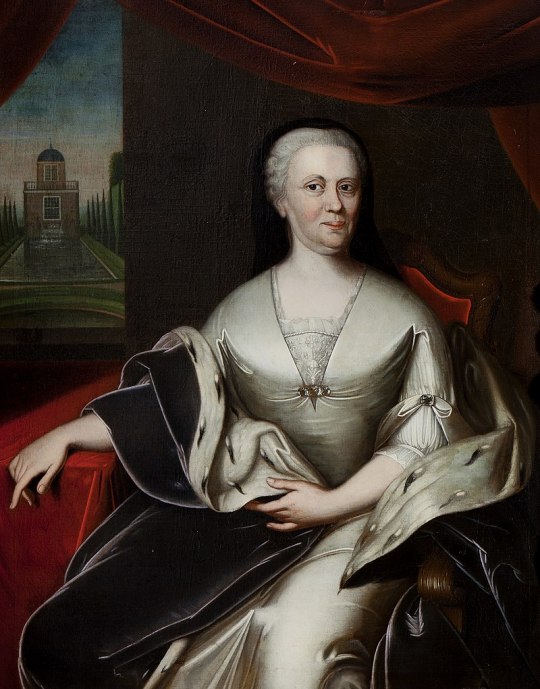
Marie Louise of Hesse-Kassel (7 February 1688 – 9 April 1765) was a Dutch regent, Princess of Orange by marriage to John William Friso, Prince of Orange, and regent of the Netherlands during the minority of her son and her grandson. She was a daughter of Charles I, Landgrave of Hesse-Kassel, and Maria Amalia of Courland. She and her husband are the most recent common ancestors of all currently reigning monarchs in Europe.
Marie Louise is notable for having served as regent for two periods in Dutch history: during the reigns of her young son, William IV, Prince of Orange from 1711 and 1730, and of her young grandson, William V, Prince of Orange, from 1759 to 1765. She was often fondly referred to as Marijke Meu (Aunt Mary) by her Dutch subjects.
#Marie Louise of Hesse-Kassel#House Hesse-Kassel#XVII century#XVIII century#people#portrait#paintings#art#arte
0 notes
Photo

Amalie Elisabeth of Hanau-Münzenberg, Landgravine of Hesse-Kassel (29 January 1602 - 8 August 1651)
#amalie elisabeth of hanau-munzenberg#landgravine of hesse-kassel#daughter of philip louis ii of hanau-munzenberg#wife of william v landgrave of hesse-kassel#history#women in history#17th century#art
0 notes